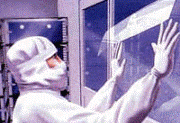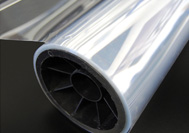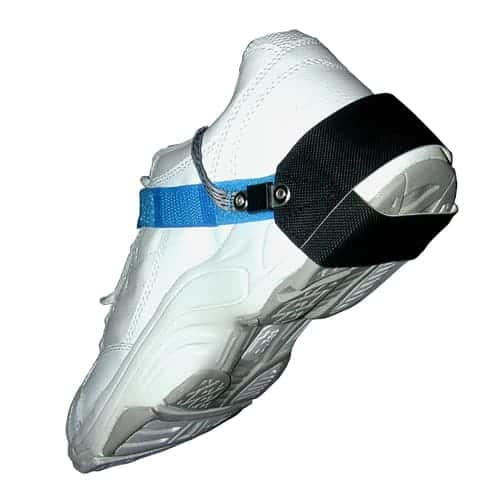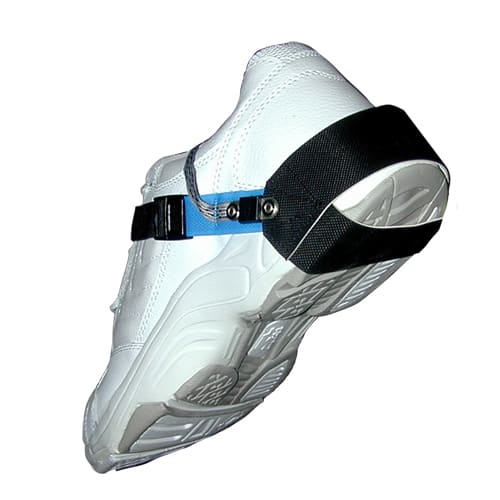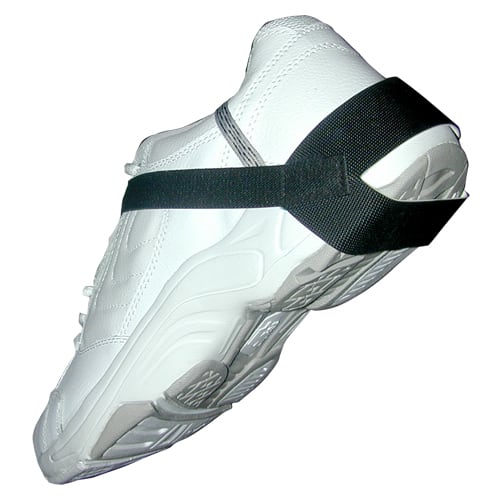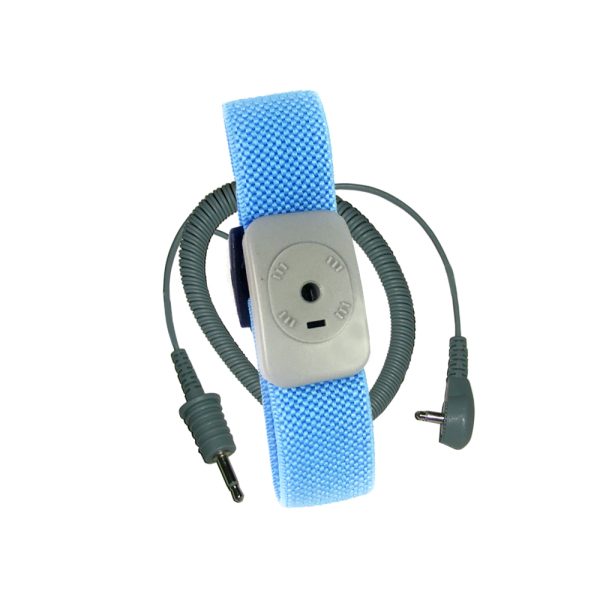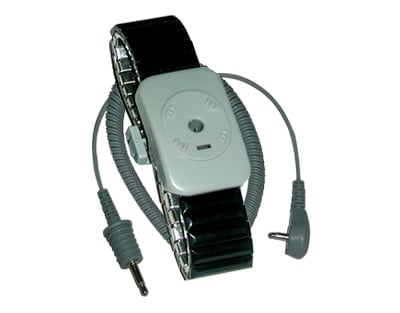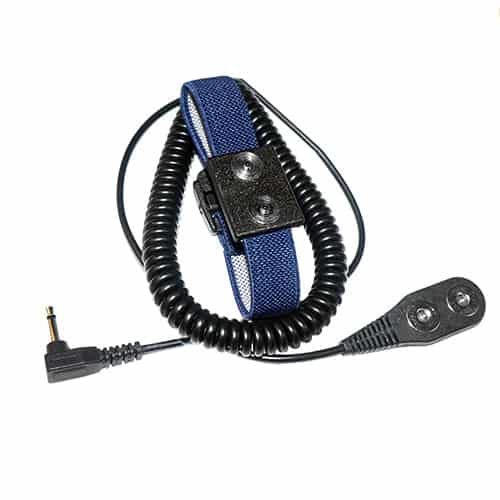Free Shipping on Most Simco-Ion Products!
View cart “ABF-300 ESD Control Film” has been added to your cart.
ABF-300 ESD Control FilmStatic Dissipative Adhesive-Backed Polyester Film |
| Description ABF-300 ESD Control Film composite is a clear, adhesive-backed film product designed to control static electricity for a wide range of end uses. Suitable for application on smooth, flat, non-porous surfaces, it is a high tensile, high tear strength polyester film surfaced with SciCron Technologies proprietary, clear, C-300 static dissipative surfacing. This unique technology prevents charge generation on the film surface, thereby controlling particulate attraction and preventing electrostatic discharge (ESD) events. This performance is permanent and totally independent of humidity. ABF-300 ESD Control Film is made with a high shear strength pressure sensitive adhesive for maximum performance and application versatility. The product exhibits excellent clarity, toughness, chemical resistance, surface hardness, mar resistance, dimensional stability, and UV light screening properties.Applications ABF-300 ESD Control Film resists tribocharging under all circumstances and cannot generate a charge when properly grounded. This makes it ideal for use in manufacturing and assembly operations for charge sensitive electronic components where it can help prevent both immediate and latent ESD caused defects. Since it resists charge build-up it does not attract contaminants, so it can also help prevent contamination-related rejects in ultra-clean manufacturing operations. Consequently, it is used in the semiconductor, electronic, and micro-manufacturing, industries. It is ideally suited for application to glass cleanroom glazing to prevent surface charge generation. Other uses include application to: machine covers and enclosures; work station and wall panel surfaces; various insulative surfaces like cabinets, boxes, drawers, and melamine laminates; CRT screens; die cut parts for OEM made devices and assemblies; and plastic panels and parts which are in ESD sensitive areas.InstallationABF-300 ESD Control Film is applied to glass or any other smooth surface like a conventional adhesive-backed window film or security film. It can be cut to size with simple tools like utility knives and scissors. Note: Once the release film backing has been removed to expose the adhesive, the product can be easily ruined if it is allowed to fold over on itself causing adhesive to touch adhesive. Even if this contact is momentary, it is very unlikely that the film can be restored to its original flat condition. For more information on handling and installation refer to SciCron Technologies Technical Information Bulletin No. FP-01. |
Features and Benefits Cannot be tribocharged when properly grounded – Prevents buildup of static charge and accumulation of harmful contamination.Electrostatic decay in less than 0.05 second per Federal Test Standard 101C, Method 4046.1 – Results in rapid static dissipation without arcing. Surface resistivity of 106 – 108 ohms per square – Provides for ESD control. Permanence in static dissipation performance – Avoids cost of application of temporary topical anti-stats. Humidity independent static charge control – Avoids inconvenience of maintaining high levels of humidity and damage caused by such humidity. Advanced technology, uniform surface treatment – Avoids conductive discontinuities (charged “hot spots”) often found with non-uniform temporary topical anti-stats. Superior optical properties – High clarity polyester film with C-300 surfacing means optimum use of available light in glazing applications. 90% UV light screen – Reduces UV exposure for light sensitive materials and processes. High tear and tensile strength polyester film – Adds impact and shatter resistance to glass windows for added facility security and personnel protection. Hard, mar resistant, durable surface – C-300 surface reduces risk of mechanical surface damage. Superior chemical resistance – Reduces risk of solvent or chemical surface damage.Availability ABF-300 ESD Control Film composite is available as a clear 4.0 mil film with a 1.0 mil release film backing which is removed prior to installation.Standard roll size: 48″ x 96″Roll Price: $375.00 ORDER NOW Made in USA |
| ABF-300 ESD Control Film Typical Physical Properties (Typical but not guaranteed) |
| property | test method | units | ABF-300 ESD Control Film (4 mil) |
| MECHANICAL |
| Tensile Strength | ASTM D-882 | psi | 25,000 |
| Break Strength | ASTM D-882 | lbs/inch | 110 |
| Peel Strength | ASTM D-882 | lbs/inch | 5 |
| THERMAL |
| U Factor | ASHREA Handbook Methods | BTU/ft2/hroF | 1.02-1.13 |
| Total Solar Energy Reflected | ASTM E-903 | % | 10 |
| Total Solar Energy Transmitted | ASTM E-903 | % | 82 |
| Total Solar Energy Absorbed | ASTM E-903 | % | 8 |
| Total Solar Energy Rejected | ASHREA Handbook Methods | % | 17 |
| Shading Coefficient | ASHREA Handbook Methods | — | 0.94 |
| OPTICAL |
| Light Transmittance — Total UV | ASHREA Handbook Methods | % | 10 |
| Light Transmittance — Total Visible | ASTM D-1003 | % | 87 |
| Haze | ASTM D-1003 | % | 6.0 |
| ELECTRICAL |
| Surface Resistivity | ASTM D-257 | ohms/sq | 106-108 |
| Surface Resistance | EOS/ESD S11.11 | ohms | 105-107 |
| Electrostatic Decay | FTS 101C Method 4046.1* | sec | Less than 0.05 |
| * Federal Test Standard 101C, Method 4046.1 as described in EIA-541, Appendix F, Measurement of Electrostatic Decay Properties of Dissipative Planar Materials | |||
| Chemical Resistance ASTM D-543 Samples immersed in the specified chemicals for 24 hours at room temperature and then visually examined |
| Chemical | Surface Attack | Visual Evaluation |
| Deionized Water | None | Clear |
| 30% Sodium Hydroxide | None | Slight Change |
| 30% Sulfuric Acid | None | Clear |
| 30% Nitric Acid | None | Clear |
| Methanol | None | Clear |
| Ethanol | None | Clear |
| Isopropyl Alcohol | None | Clear |
| Methylene Chloride | None | Clear |
|
Technical Bulletin FP-01
Application of ABF-300™ ESD Control Film
| Tools Required Plastic bottle with atomizing sprayer filled with soap solution (3 drops of Johnson and Johnson Baby Shampoo in 1 pint of filtered, deionized water), lint-free wipers, tape measure, straight-edge ruler, single edge razor lade cutter or utility knife, four to six-inch rubber squeegee, and transparent tape. |
|
| Surface Preparation For best results, the application surface should be hard and smooth, e.g. windows, partitions, walls, or machine enclosures. Note that ABF-300 ESD Control Film is intended for interior surfaces only. Ideal application temperature is between 40ºF and 80ºF.Turn off equipment that might blow dust onto the application surface. Thoroughly clean the surface to remove dirt and other contaminants. Use a scraper or razor blade to remove any loose or rough particles. Pay particular attention to edges and corners where there may be dirt build-up. After cleaning, squeegee the surface dry, and collect any residual liquid with a lint-free wiper. |
|
| INSTALLATION INSTRUCTIONS | |
| Step 1 – Cutting the Film Measure the area to be covered. Add 1/2″ on all sides, this excess will be trimmed off after application. Lay the film on a flat, clean, and dry surface. Using a straight edge and single-edge razor blade, cut the film to the oversized dimensions. When cutting, retain one side with the factory edge. |
|
| Step 2 – Wetting the Application Surface Using the sprayer, apply the soapy water solution generously to the application surface until beads of moisture appear on the surface. The solution will act as a lubricant and will not ultimately affect the clarity of the film. If the surface becomes dry before film application, repeat the spraying operation. |
|
| Step 3 – Removing the Film Backing Remove the clear protective liner from the folm by attaching two pieces of transparent tape to the front and back surfaces of the film at a corner. Allow enough tape to lap over the edge of the film to retain a grip on each piece of the tape. Pull the pieces of tape apart, separating the liner from the film. The liner should be removed in one smooth, continuous motion. Wet the back side (adhesive side) of the film with the soap solution as the liner is removed (a second pair of hands may be helpful). |
|
| Step 4 – Placing the Film on the Application Surface Place the wetted adhesive side on the wet application surface, lining up the factory edge with a straight surface edge. Carefully position the film so that it overlaps the remaining sides. Be sure to handle the film carefully to avoid wrinkles and creases. Both water and air buddles will be smoothed away during the squeegee process, but creases cannot easily be removed. |
|
| Step 5 – Removing Water and Air Bubbles Spray the entire surface of the film with a soapy water solution to act as a lubricant during the squeegee process. Squeegee the film surface, starting in the middle and working first towards the top and then the bottom. Using short strokes, next squeegee from the center, alternating towards the left and then right sides, beginning from the top-center of the film surface, working progressively down to the bottom of the application surface. Do not go all the way to either side or edge at this time. Apply enough pressure to remove all of the water and air bubbles. Do not try to squeegee the far edges or corners until they have been trimmed. |
|
| Step 6 – Trimming to Final Dimension Using a straight edge and single-edge razor blade, trim as closely as possible to the edge of the application surface. Wet the entire film surface when trimming is complete, and squeegee once more, all the way out to the edges and corners, removing any moisture and air bubbles remaining between the film and the surface below. When all air bubbles and moisture have been removed between the film and application surface, dry the exterior face of the film with a lint-free wiper. |
|
| ADDITIONAL INFORMATION | |
| Application on Surfaces Wider than the ABF-300 ESD Control Film Two or more widths of film can be butted together prior to the squeegee process. If a perfect seam is required, the film can be overlapped and double-cut like wallpaper. |
|
| Grounding the Film Surface The entire surface of ABF-300 ESD Control Films is eletroconductive. To ground, it is necessary only to contact ground at one point on each piece of film. Grounding can be achieved through a direct mechanical attachment or by attachment of conductive tape that is relayed to ground. |
|
Cleaning and Care of ABF-300 ESD Control Film
|
|
FP-01-02 5/17
| The information and statements contained herein are believed to be accurate, however, users should perform their own testing and verification to determine the durability, applicability and suitability of the products for their own purposes. NOTHING CONTAINED HEREIN SHALL BE CONSTRUED AS A REPRESENTATION OR WARRANTY OF ANY KIND, EXPRESS OR IMPLIED. IMPLIED WARRANTIES OF MERCHANABILITY OR FITNESS FOR A PARTICULAR PURPOSE ARE HEREBY EXCLUDED. |
You May Also Be Interested In
Sign Up For Our Newsletter

A name you can trust. Doing business since 1978!
Location
© 2025 CC Steven. All Rights Reserved. Terms. Designed by SEOpologist.

